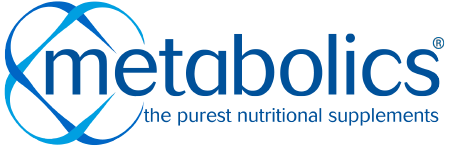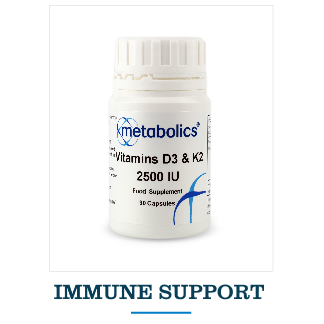Bone is a dynamic tissue being continually broken down and rebuilt in a process known as remodelling. Cells called Osteoclasts, made in bone marrow break down and reabsorb bone tissue liberating. Calcium and other minerals stored in the bone matrix. Bone stores Calcium phosphate and growth factors. Cells called osteoblasts, derived from cells associated with blood vessels, move in and make new bone tissue, known as Osteoid which is predominantly made of collagen. Minerals crystallise around the collagen matrix to form hydroxyapatite, the major inorganic constituent of bone containing Calcium Phosphate. As the osteoblasts form new bone tissue some become embedded in the bone tissue and differentiate into Osteocytes.
Bone density (BMD or Bone Mass Density) begins to decrease in our early 20’s. After age 30 most people have a decreased bone mass due to increased orthoclastic activity compared to Osteoblastic activity. Decreased BMD means decreased bone strength and fracture risk.
Osteoporosis is decreased bone density, which means it is porous and weakened at risk of fracture. It is common in postmenopausal women because Oestrogen regulates osteoclasts removal of dead demineralised bone and progesterone is required by osteoblasts to build new bone, so decreased oestrogen means increased bone resorption, and decreased progesterone means less bone building.
Genetic, hormonal and lifestyle factors, such as exercise all impact on BMD. Certain nutrients are also implicated in a bone support formula and these are all put together in our supplement for Osteoporosis called "OsteoAid".
Supplements For Osteoporosis
There are a number of supplements for Osteoporosis that are readily available from supplement manufactures or pharmacies.
Calcium - is the main component of bone and 99% of the bodies Calcium resides in bone. Skeletal Calcium also acts as a reserve supply of calcium to meet the body's metabolic needs in states of calcium deficiency and Calcium is lost through the bowels, skin and kidneys. Several studies show that calcium supplementation improves bone density in perimenopausal women and slows the rate of bone loss in postmenopausal women by 30-50%, thus reducing the risk of hip fracture and also elderly postmenopausal women Loss of bone starts in women at the time of the menopause and urinary calcium excretion increases and in men at about age 55 and leads to an increase in fracture rates in both sexes.
In our product Osteomax we use a chelated form of Calcium, Calcium Citrate where calcium is bound to Kreb cycle intermediate, citrate which is up to 27% better absorbed than calcium carbonate. Our Calcium citrate is heavy metal free compared to many naturally derived calcium’s from coral, oyster or bone meal which have been shown to contain high concentrations of lead.
Vitamin D3 - It is essential for the absorption and metabolism of Calcium. Vitamin D has also been shown to reduce the occurrence of fractures within the first year of supplementation, before it has had a significant effect on bone density. Vitamin D improves muscle strength and balance and so decreasing the incidence of falls Source.
Vitamin K2- when vitamin D is given with calcium, Vitamin K2 should always be included as it is required to direct the calcium to the bones. Supplementation with Vitamin D3 and Calcium in an absence of Vitamin K can lead to cardiovascular calcification. There are numerous research studies to show that Vitamin K2 deficiency is associated with high levels of undercarboxylated osteocalcin. Decreased bone density and increased fracture risk and that supplementation with vitamin K2 reduces bone loss and fractures . There are also a number of clinical trials that demonstrate that VitaminD3/K2 combination supplementation is more effective in preventing bone loss than either alone. In one study involving osteoporotic postmenopausal women that were given a D3/K2 combo, showed a 4.92% increase in bone density compared to 0.13% in those receiving just K2 This was supported by further study . In postmenopausal women receiving only calcium , lumbar bone density decreased, those given either D3 or K2 increased bone density slightly and those given a combination had the greatest increase in bone density.
Magnesium - 50% of the bodies Magnesium is found in bones. Adequate magnesium is required for.
- The absorption and metabolism of Calcium
- The conversion of Vitamin D into its active form ( 25-(OH)D3 to 1,25-(OH)2D3)
- Stimulating the thyroids production of calcitonin, which helps to regulate blood calcium by slowing down the amount of calcium released from the bones, slowing bone resorption
- Regulating parathyroid hormone, which is a regulator of bone breakdown
- Activate the enzyme required for production of new bone
- Regulating Calcium transport
Magnesium has been shown to be in decreased concentration in the blood in post menopausal women with osteoporosis. Osteoporotic women have been shown to have decreased serum levels of magnesium and lower bone magnesium content. Another study showed that magnesium supplementation improved bone mineral density.
Boron
- Boron is involved in the conversion of vitamin D
- Boron also stabilizes and extends the half life of Vitamin D and oestrogen. As oestrogen drops at menopause there is an Increase in certain inflammatory chemicals (a cytokine called interleukin 6 ) which stimulates osteoclast production. Boron is required for oestrogen to convert to 17- beta oestrodiol which is more potent than oestrogen, so prolonging the beneficial effects of oestrogen .One study where postmenopausal women were supplemented with 3mg daily Boron, significantly decreased urinary excretory calcium and increased levels of 17-beta-estrodio
- Boron is also involved in converting Vitamin D to bone building calcitriol
- Boron also has an interactive role with Calcium and magnesium and Vitamin D
Manganese - stimulates the production of mucopolysaccharides, the organic bone matrix Manganese seems to be important for the enzymatic activity of glycosyltransferases, enzymes required for the synthesis of proteoglycans which play a vital role in mucopolysaccharide synthesis. Impaired activity of these enzymes, due to manganese deficiencies, can result in abnormal cartilage formation. Studies on the role of manganese in bone formation concluded that deficiency of manganese in cartilage (in chicks) resulted in alteration of Mucopolysaccharide resulting in a bone changes, including less rigidity.
Women with osteoporosis were found to have decreased serum manganese, which increased with manganese supplementation.
The EFSAruled that “Manganese is needed for the structure of strong bones.
High calcium and phosphorus decrease manganese absorption, which is why it is important in "Osteomax" our osteoporosis supplement to maintain levels of Manganese, due to the calcium content.
Vitamin B12 - plays an important role in maintaining bone integrity and beating the early signs of Osteoporsis. As explained above, as we age osteoclastic activity (bone breakdown) exceeds osteoblastic (bone build up) activity. B12 helps form new red blood cells in the bone marrow .Also B12 is arguably the most important factor in Homocysteine metabolism, without which homocysteine levels can rise. Homocysteine can interfere with collagen cross linking and weaken bone matrix, increasing bone fragility.
Homocysteine has also been shown to increase Reactive Oxygen Species (ROS) in Osteoblasts, so leading to cell death (apoptosis) High homocysteine has also been shown to increase osteocalcin and related to increased hip fracture rates.
The most well known study on B12 and its role in bone density is the Framingham Osteoporosis study from 1987 which concluded low levels of B12 exist in people with osteoporosis.
Silicon - Silicon is a major trace element in the body. Silicon is high in hops and barley and therefore high in beer! We ingest 20-50mg /day, although post menopausal women absorb silica less easily than younger women ,and it is excreted in the same amount as calcium. Silicon is 25x more concentrated in bone forming protein than in mature bone. It appears to act as a catalyst to make the bone calcify and then leaves so there is no harmful build up Accumulated evidence over the last 30 years suggests an important role in bone formation and bone and connective tissue health. Mechanisms are unclear but evidence exists of its involvement in collagen synthesis and/or its stabilization and in matrix mineralization. Researchers found that short term supplementation with silicon improved Bone mineral density in osteoporosis in animals.
Beta Carotene - There are two sources of Vitamin A, Retinol found in animal products and beta carotene found in carrots and deep green leafy vegetables. Excess intake of Retinol is associated with a risk of osteoporosis and increased bone fracture, whereas high intake of Beta carotene is not. It is thought that excessive amounts of Vitamin A trigger and increase in osteoclasts and osteoclastic activity and slow the growth of osteoblasts. Vitamin A also stimulates osteoblasts to secrete osteocalcin which helps bind calcium into the bone matrix and there is a delicate balance between Vitamin A and vitamin D3.Vitamin D on its own stimulates osteocalcin but together with A has an enhanced synergistic effect.
Beta Carotene - is the precursor to make Vitamin A and is considered safe and does not increase fracture risk. Beta Carotene the precursor of retinoic acid which has been shown to induce MGP and is therefore why we choose to use beta carotene and NOT Vitamin A in Metabolics products.
Green Tea –There is a large body of evidence supporting the role of Green tea in bone health, both in research and epidemiologically. The main bioactive component of Green Tea is Epigallocatechin (EGCG). Research has shown that EGCG can improve bone density by enhancing osteoblastic activity while suppressing osteoclastic activity (by increasing osteoclast apoptosis) at the same time as decreasing oxidative stress (ROS) and proinflammatory chemicals. This results in enhanced mineralization and decreased risk of fracture.
Metabolics uses a powerful 45% EGCG Green tea in its formulations. Further reading on essential nutrients for bone health can be found on here.
Exercise - It is also important to remember that modest exercise should always be recommended as part of a bone health program. 20 minutes of modest impact activity or resistance training, or vibrational therapy 3x a week can improve bone mineral density.
If you have any questions regarding our product OsteoAid please either leave a comment below or contact us to speak to one of our team.



